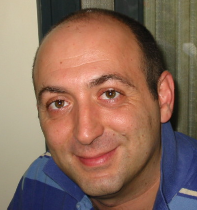
Coordinator: Roberto De Pietri
Phone: +39 0521 905280
Mail: roberto.depietri _at_ unipr.it
Activity
The people involved in the activity of the Gravitational Physics unit are Dr. Alessandra Feo and Dr. (Ph.D. Candidate) Michele Pasquali. The main research activity are inside:
- The INFN “Specific Initiatives” NEUMATT (NEUtron star MATter theory)
- The Virgo experiment
The Gravitational Physics study the gravitational phenomena that are described by Einstein’s general relativity (GR) theory. This theory is our best description of all the gravitational phenomena present in the universe. From one side it reduces to the standard Newton’s theory for gravity when the velocity of motion of the bodies are much less than the speed of light and when gravitational fields are weak, but it also describe its tiny deviation measured in the solar system. But most striking it predicted Gravitational Waves, i.e., the existence of ripples of the space-time traveling at the speed of light that are now one of the most importan messanger to see and unveil the universe.
More precisely the group is involved in the numerical simulation of Einstein’s Equation and with the modeling of compact objects, such as neutron stars and black holes, and the generation of the gravitational waves emited by compact objects when they merge and collide and on the analising of the the gravitational wave signal detected by the LIGO/Virgo interferometric detector of gravitational weaves.
Selected Recent Publications
- R. De Pietri, A. Drago, A. Feo, G. Pagliara, M. Pasquali, S. Traversi, G. Wiktorowicz, Merger of compact stars in the two-families scenario. arxiv: 1904.01545 [astro-ph]
- R. De Pietri, A. Feo, J.A. Font, F. Loeffler, F. Maione, M. Pasquali and N. Stergioulas, Convective excitation of inertial modes in binary neutron star mergers. Phys. Rev. Lett. 120 (2018) no.22, 221101. DOI: 10.1103/PhysRevLett.120.221101. arxiv:1802.03288
- GW170817: Observation of Gravitational Waves from a Binary Neutron Star Inspiral By LIGO Scientific and Virgo Collaborations (B.P. Abbott et al.). Phys.Rev.Lett. 119 (2017) no.16, 161101. DOI: 10.1103/PhysRevLett.119.161101. arXiv:1710.05832 [gr-qc].
